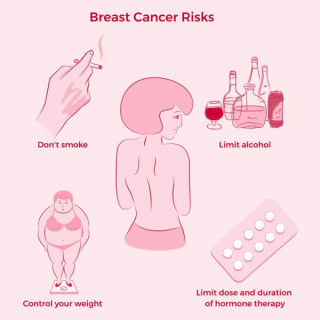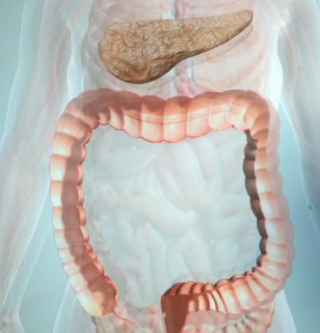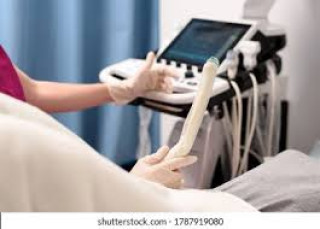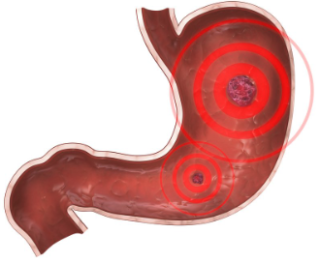Steve Jobs' Battle with Pancreatic Cancer and His Unconventional Dietary Choicesupdated at Nov 14, 2025 76 76 The story of Steve Jobs' battle with pancreatic cancer has resurfaced, |
Vulvar Intraepithelial Neoplasia as Risk Factors for Vulvar Cancerupdated at Nov 08, 2025 1,316 1,316 Vulvar intraepithelial neoplasia (VIN) represents the abnormal growth of cells within the vulvar epithelium.It's classified as a precancerous condition, |
What is ovarian cancer?created at May 05, 2009 1,231 1,231 Ovarian cancer is a type of cancer that begins in the ovaries, |
What's new in endometrial cancer research and treatment?created at May 05, 2009 1,211 1,211 Recent advancements in endometrial cancer research focus on improving risk stratification through genomic profiling and identifying novel biomarkers for early detection and prognosis.Immunotherapy, |
Understanding the Risks Between Aging and Stomach Cancercreated at May 04, 2009 1,174 1,174 The risk of stomach cancer increases significantly with age, |
What is brain cancer?created at May 03, 2009 1,150 1,150 Brain cancer is a disease in which malignant (cancerous) cells form in the tissues of the brain.It encompasses a wide variety of tumors, |
How to avoid age spots?created at May 05, 2009 1,253 1,253 Preventing age spots, |
How do I prevent age spots from recurring?created at May 05, 2009 1,148 1,148 Preventing age spot recurrence requires a multi-pronged approach focusing on sun protection: consistently using a broad-spectrum sunscreen with an SPF of 30 or higher daily, |
The Looming Threat: Stomach Cancer and its Ties to Tobacco and Alcohol Abusecreated at May 04, 2009 1,229 1,229 Stomach cancer, |
The Silent Threat: Arsenic and its Link to Liver Cancercreated at May 04, 2009 1,181 1,181 Arsenic, |
Exploring the Relationship Between Birth Control Pills and Liver Cancer Riskcreated at May 04, 2009 1,183 1,183 Studies have shown a slightly increased risk of developing liver cancer in women who use oral contraceptives, |
What are the symptoms of colorectal cancer?created at May 04, 2009 1,254 1,254 Colorectal cancer symptoms often develop gradually and can be subtle at first, |
What should I do if I find a lump while performing a monthly breast self-exam?created at May 03, 2009 1,188 1,188 Finding a lump during a breast self-exam doesn't automatically mean it's cancerous, |
Understanding Your Risk: How Likely Are You to Get Breast Cancer?created at May 03, 2009 1,189 1,189 Your risk of developing breast cancer depends on many factors, |
Demystifying Pancreatic Cancer: What You Need to Knowcreated at May 04, 2009 1,218 1,218 Pancreatic cancer is a serious disease characterized by uncontrolled growth of cells in the pancreas, |
Demystifying Liver Cancer: Understanding the Basicscreated at May 04, 2009 1,191 1,191 Liver cancer, |
Recognizing the Red Flags: Warning Signs for Breast Cancercreated at May 03, 2009 1,238 1,238 Warning signs of breast cancer can include a new lump or thickening in the breast or underarm, |
Understanding the Link: Cirrhosis and Liver Cancer Riskupdated at Nov 29, 2024 1,389 1,389 Cirrhosis, |
Unveiling the Elusive Symptoms of Pancreatic Cancercreated at May 04, 2009 1,159 1,159 Pancreatic cancer, |
Understanding Colorectal Cancer: A Vital Insightcreated at May 04, 2009 1,239 1,239 Colorectal cancer, |
Decoding Thyroid Cancer: Recognizing the Signs and Symptomscreated at May 04, 2009 1,291 1,291 Thyroid cancer, |
Understanding Your Risks for Breast Cancercreated at May 03, 2009 1,135 1,135 When it comes to breast cancer, |
Understanding the Diagnostic Process for Liver Cancercreated at May 04, 2009 1,243 1,243 If you’re concerned about liver cancer, |
Dispelling Concerns: Understanding Radiation Exposure from Mammogramscreated at May 03, 2009 1,173 1,173 Concerns about radiation exposure from mammograms are common among women undergoing breast cancer screening. However, |
Debunking the Myth: Understanding Mammogram Discomfortcreated at May 03, 2009 1,284 1,284 Mammograms are a crucial tool in breast cancer screening, |
Exploring the Risk Factors for Bone Cancer: What You Need to Knowcreated at May 03, 2009 1,218 1,218 Understanding the risk factors associated with bone cancer is crucial for early detection and prevention. Here's a closer look at the factors that may increase an individual's susceptibility to this condition:1. Age and Previous Treatments: Children and ad... |
Unveiling the Causes and Risk Factors of Endocrine Cancer: What You Need to Knowcreated at May 04, 2009 1,135 1,135 Endocrine cancer, |
Understanding the Symptoms of Endocrine Cancer: A Comprehensive Guidecreated at May 04, 2009 1,248 1,248 Endocrine cancer manifests in various glands throughout the body, |
Understanding Vulvar Cancer Symptoms: When to Seek Medical Attentioncreated at May 05, 2009 1,272 1,272 Vulvar cancer, |
Unveiling the Link: Human Papillomas (HPV Infection) as Risk Factors for Vulvar Cancercreated at May 05, 2009 1,179 1,179 Human papillomavirus (HPV) infection has emerged as a significant contributor to vulvar cancer, |
Listening to Your Body: Understanding the Symptoms of Cervical Cancercreated at May 04, 2009 1,242 1,242 Cervical cancer often begins as precancerous changes that quietly develop without causing pain or noticeable symptoms. In fact, |
Decoding the Pelvic Exam: A Comprehensive Women's Health Assessmentupdated at Nov 14, 2025 1,199 1,199 A pelvic exam is a vital part of comprehensive women's healthcare.It involves a thorough evaluation of key reproductive organs. What a Pelvic Exam EntailsDuring a pelvic exam, |
Empowering Women's Health: Early Detection of Cervical Cancer"created at May 04, 2009 1,223 1,223 Prioritizing regular pelvic exams and Pap tests emerges as a powerful strategy for the early detection and prevention of cervical cancer. These essential screenings play a pivotal role in identifying precancerous conditions, |
Shedding Light on Stomach Cancer: Detecting Through Barium Upper GI Radiographscreated at May 04, 2009 1,236 1,236 In the quest for effective detection and diagnosis of stomach cancer, |
Illuminating the Path: Detecting Stomach Cancer Through Upper Endoscopycreated at May 04, 2009 1,187 1,187 In the pursuit of early detection and precise diagnosis of stomach cancer, |
Deciphering the Diagnosis: How Will My Doctor Detect Stomach Cancer?created at May 04, 2009 1,189 1,189 When it comes to identifying stomach cancer, |
Decoding the Signs: Recognizing Symptoms of Stomach Cancercreated at May 04, 2009 1,314 1,314 Identifying potential symptoms of stomach cancer is crucial for early detection and prompt medical intervention. While these signs may indicate the presence of stomach cancer, |
Unveiling the Link: Helicobacter pylori Infection and the Risk of Stomach Cancerupdated at Nov 14, 2025 1,166 1,166 Helicobacter pylori: A Key Risk FactorHelicobacter pylori (H.pylori) is a prevalent bacterium strongly linked to various stomach ailments, |
Understanding the Family History of Stomach Cancercreated at May 04, 2009 1,152 1,152 Family history plays a crucial role in understanding an individual's risk of developing certain diseases, |
Understanding Biopsies for Cervical Cancer Diagnosiscreated at May 04, 2009 1,190 1,190 Biopsies are pivotal in diagnosing cervical cancer, |
Understanding Vulvar Cancer - A Rare But Important Concern for Womencreated at May 05, 2009 1,244 1,244 Vulvar cancer, |
Understanding Age as a Risk Factor for Vulvar Cancerupdated at Nov 09, 2025 1,163 1,163 Age is a critical factor in assessing the risk of developing vulvar cancer.Data consistently shows a strong relationship between age and the likelihood of a vulvar cancer diagnosis. Age and Vulvar Cancer IncidenceApproximately three-quarters of women diagn... |
What are the causes and risk factors for Pancreatic Cancer?updated at Nov 13, 2025 1,180 1,180 Pinpointing the exact cause of pancreatic cancer in each individual is challenging.However, |
Surgery for Colorectal Cancerupdated at Nov 13, 2025 1,218 1,218 Surgery is frequently the primary and sometimes the sole treatment approach for colorectal cancer.The specific surgical procedure employed is dictated by the tumor's location and size. Partial Colectomy: The Standard ProcedureThe most common surgical inter... |
What can I do to detect it?created at May 04, 2009 1,227 1,227 Most health problems respond best to treatment when they are diagnosed and treated as early as possible. This is especially true of colorectal cancer. Treatment is most effective before the disease spreads. People can take an active role in the early detec... |





























